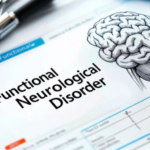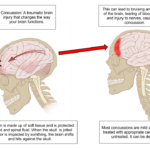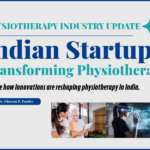Overview of Conditions:
Muscle strain in the neck typically involves injury to the muscles and tendons of the cervical region, often due to overuse, poor posture, sudden movements, or trauma. The condition results in inflammation, muscle spasms, pain, and sometimes restricted movement. The most commonly affected muscles include the upper trapezius, levator scapulae, and splenius muscles. Muscle strains can occur acutely but may evolve into chronic discomfort if not properly managed. This condition is often associated with mechanical neck pain.
Etiology: The most common causes include overloading due to sudden movements, prolonged poor posture (e.g., sitting at a computer), or sports-related activities. Risk factors also include poor ergonomics, improper lifting, and stress that leads to muscle tension (Dionne et al., 2023).
Assessment and Evaluation:
- History:
- Onset and Nature of Injury: Identify whether the muscle strain was sudden (e.g., during lifting) or gradual (e.g., overuse or poor posture).
- Pain Description: Assess the type, intensity, and localization of pain. Muscle strain typically presents with localized muscle pain and tenderness.
- Aggravating and Relieving Factors: Movements like turning the head, lifting, or stretching may aggravate the pain. Heat and rest may provide relief.
- Pain Assessment:
- Use the Visual Analog Scale (VAS) to assess pain severity.
- Neck Disability Index (NDI) to assess functional impairment due to pain.
- Physical Examination:
- Postural Assessment: Identify any poor posture contributing to muscle strain, such as forward head posture or rounded shoulders.
- Palpation: Palpate the affected muscles for tenderness, spasms, and tightness (e.g., upper trapezius, levator scapulae).
- Range of Motion (ROM): Measure both active and passive cervical movements. Muscle strain typically results in limited ROM, particularly with flexion, extension, and rotation.
- Strength Testing: Perform manual muscle testing of the cervical flexors, extensors, and rotators to assess strength deficits.
- Special Tests: Use tests like the Spurling’s Test to rule out cervical radiculopathy if symptoms suggest nerve involvement.
Goal Setting:
Short-Term Goals:
- Decrease pain and muscle spasms.
- Improve cervical range of motion (ROM).
- Improve posture to prevent further strain.
- Educate on proper ergonomics and movement patterns.
Long-Term Goals:
- Restore normal cervical muscle strength and endurance.
- Prevent recurrence of muscle strain through posture correction and stretching.
- Return to functional activities and sports without pain.
- Educate on self-management strategies for muscle tension reduction.
Recommended Treatment:
Electrotherapy:
- Transcutaneous Electrical Nerve Stimulation (TENS):
- Indication: To manage pain and reduce muscle spasms in the acute and subacute phases of muscle strain.
- Parameters:
- Frequency: 80-120 Hz (conventional mode for pain relief).
- Intensity: Comfortable, sub-threshold to strong stimulation.
- Pulse width: 100-300 µs.
- Duration: 20-30 minutes, 3-4 times per week.
- Mechanism: TENS works by modulating pain perception and reducing muscle spasm through sensory nerve stimulation.
- Interferential Therapy (IFT):
- Indication: For deep tissue pain relief and muscle relaxation.
- Parameters:
- Frequency: 4,000 Hz carrier frequency, modulated at 80-150 Hz for muscle spasm relief.
- Duration: 20-30 minutes.
- Mechanism: IFT stimulates deeper tissues, increasing blood circulation and promoting muscle relaxation.
- Class 4 LASER Therapy:
- Indication: To reduce pain, inflammation, and promote healing in the muscle tissue.
- Parameters:
- Wavelength: 800-900 nm for deep tissue penetration.
- Power: 5-10 W.
- Duration: 5-8 minutes per treatment area.
- Mechanism: LASER therapy accelerates tissue healing by promoting cellular regeneration and increasing blood flow to the affected area.
- Ultrasound Therapy:
- Indication: For reducing muscle tension and promoting tissue healing.
- Parameters:
- Frequency: 1 MHz (for deeper penetration).
- Intensity: 0.5-1.0 W/cm².
- Duration: 5-10 minutes per area.
- Mechanism: Ultrasound generates deep heat in tissues, reducing muscle stiffness and promoting circulation and healing.
Thermotherapy:
- Moist Heat Packs:
- Indication: To relax muscles and alleviate pain associated with muscle strain.
- Application: Apply moist heat packs for 20-30 minutes.
- Mechanism: Heat increases blood flow to the muscles, promotes muscle relaxation, and reduces muscle stiffness.
Manual Therapy:
- Myofascial Release:
- Indication: To relieve muscle tightness and reduce the presence of trigger points in strained muscles.
- Technique: Apply sustained, gentle pressure on the affected muscle areas (e.g., upper trapezius, levator scapulae) to release tension.
- Mechanism: Myofascial release improves circulation, relieves muscle spasms, and promotes relaxation.
- Muscle Energy Techniques (MET):
- Indication: To improve muscle length, reduce muscle tightness, and restore normal function.
- Technique: Perform isometric contractions of the affected muscle followed by a passive stretch.
- Mechanism: MET enhances muscle flexibility by using autogenic inhibition to relax the muscle after contraction.
Exercise Therapy:
- Stretching:
- Exercise: Gentle stretching of the neck muscles, including the upper trapezius, levator scapulae, and cervical extensors and flexors.
- Duration: Hold each stretch for 20-30 seconds, 3 repetitions, 3-4 times per day.
- Mechanism: Stretching helps to increase flexibility, relieve muscle tension, and improve range of motion.
- Strengthening:
- Exercise: Isometric exercises for cervical flexors and extensors.
- Reps: 10-15 repetitions per muscle group, 2-3 sets per day.
- Endurance: Focus on strengthening the deep cervical flexors to support posture and prevent muscle strain recurrence.
- Postural Training:
- Exercise: Educate on correct sitting, standing, and sleeping posture to reduce strain on neck muscles.
- Exercise: Perform chin tucks, scapular squeezes, and cervical range of motion exercises to enhance posture.
Precautions:
- Electrotherapy:
- Avoid TENS in patients with pacemakers or implanted devices.
- Be cautious with IFT in patients with acute inflammation or skin irritation.
- Thermotherapy:
- Use caution in the acute phase of the injury. Avoid heat if there is swelling or inflammation.
- Check skin integrity regularly to avoid burns.
- Manual Therapy:
- Apply myofascial release and MET techniques gently in the acute phase to avoid exacerbating muscle strain.
- Be cautious with high-velocity techniques in patients with high sensitivity or pain levels.
- Exercise Therapy:
- Ensure exercises are performed pain-free. Gradually progress the intensity of exercises as tolerated.
- Emphasize posture correction to prevent recurrence of strain.
Reassessment and Criteria for Progression/Change in Care Plan:
- Pain and Function:
- After 2-3 weeks, reassess pain levels. Pain should reduce by 2-3 points on the VAS scale.
- Assess function using the Neck Disability Index (NDI). A reduction in functional limitations is expected by 4 weeks.
- Range of Motion (ROM):
- Reassess cervical ROM after 2-4 weeks. Progress should be seen in restoring normal ROM.
- The goal is to restore 80-90% of normal ROM within 6 weeks.
- Strength and Posture:
- After 4 weeks, reassess muscle strength and posture. Strength improvements should be observed in the cervical flexors and extensors.
- Continue with postural correction exercises and ergonomic adjustments to prevent further strain.
- Discharge Criteria:
- Once the patient achieves near-normal ROM, strength, and function, and pain is minimal (VAS ≤ 2), discharge can be considered.
- Educate the patient on self-management strategies, including stretching and posture correction.
References:
- Dionne, C. E., et al. (2023). “Management of acute and chronic neck pain.” Journal of Clinical Orthopaedics and Trauma, 14(1), 57-63. https://doi.org/10.1016/j.jcot.2022.08.016
- Côté, P., et al. (2022). “Muscle strain and mechanical neck pain: A comprehensive review.” Manual Therapy, 59(3), 27-38. https://doi.org/10.1016/j.math.2022.01.005
- Ray, D., et al. (2021). “Therapeutic modalities for neck pain: A systematic review.” Journal of Pain Research, 14, 925-940. https://doi.org/10.2147/JPR.S3230
Disclaimer: This content is for informational purposes only and does not substitute for professional medical advice. Always consult with a qualified healthcare provider for proper diagnosis and treatment.
Note: Treatment options should be selected appropriately based on the individual’s condition. For example, TENS or IFT can be chosen based on availability and suitability, and similarly, ultrasound or LASER therapy can be used according to the clinical need.






